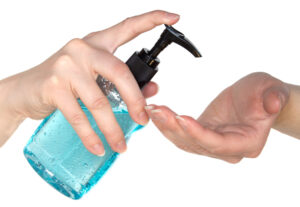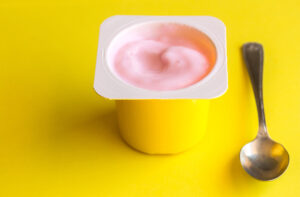Most of us know that too much sugar isn’t good for our health. It can cause weight gain, energy crashes, and even raise the risk of diabetes and heart problems. That’s why many people are looking for healthier ways to enjoy sweetness without the same risks.
One of the best options is honey. Unlike refined sugar, which only gives empty calories, honey is a natural sweetener made by bees from flower nectar. It also contains antioxidants, enzymes, and small amounts of vitamins and minerals that make it a better choice. Let’s take a closer look at honey and why it can be a smart replacement for sugar.
Honey as Nature’s Sweetener
Honey is often called nature’s sweetener because it comes straight from bees without the heavy processing that refined sugar goes through. Beyond its sweet taste, honey carries small amounts of nutrients that sugar completely lacks. It contains trace minerals like potassium, magnesium, and copper, along with enzymes and antioxidants such as flavonoids and phenolic acids. These compounds support the body in ways that ordinary sugar never can, from aiding digestion to reducing oxidative stress. But do remember, honey is still sugar, so moderation is important.
Refined Sugar vs. Honey
- Refined sugar is one of the most common sweeteners in the world, but it comes at a cost to health. It is made by heavily processing sugarcane or sugar beets until only pure sucrose crystals remain. This process strips away all vitamins, minerals, and natural compounds, leaving what many call “empty calories.” Consuming too much refined sugar is linked to weight gain, energy crashes, tooth decay, and increased risk of chronic conditions such as type 2 diabetes and heart disease.
- Honey, on the other hand, is produced by bees from flower nectar and is a natural sweetener. Pure or raw honey undergoes minimal processing, which means it retains beneficial compounds that sugar lacks. Along with its natural sweetness, honey provides small amounts of minerals like potassium and magnesium, enzymes that aid digestion, and antioxidants that help fight oxidative stress in the body.
- The biggest difference lies in their nutritional impact. While both contain sugars and calories, honey has a lower glycemic index (GI) than refined sugar. This means it raises blood sugar more slowly, offering a steadier release of energy. Honey also contributes trace nutrients and protective compounds, making it more than just a sweetener; it’s a food with added health value.
Refined Sugar vs. Honey: A Quick Comparison
| Feature | Refined Sugar | Honey (Raw/Pure) |
| Calories (per tbsp) | ~49 | ~64 |
| Glycemic Index (GI) | High (65+) | Moderate (45–55) |
| Nutrients | None | Trace minerals (K, Mg, Cu) |
| Antioxidants/Enzymes | None | Present (flavonoids, phenolic acids) |
| Health Effects | Energy spikes, empty calories, and higher disease risk | Steadier energy, mild antioxidant, and digestive benefits |
Nutritional Profile of Honey
- Macronutrients: Honey is made up mostly of natural sugars. The two main types are fructose and glucose, which give honey its sweetness and energy. These sugars are easier for the body to use compared to refined sugar, and they provide a quick source of fuel.
- Micronutrients: Unlike white sugar, honey has tiny amounts of vitamins and minerals. These include B vitamins such as riboflavin and vitamin B6, as well as important minerals like copper, manganese, and potassium. While the amounts are small, they still add extra value to honey compared to refined sugar, which has none.
- Bioactive Compounds: What really makes honey special are its bioactive compounds. Honey contains natural antioxidants like polyphenols and flavonoids, which help protect the body from cell damage caused by free radicals. It also has enzymes that support digestion and may improve overall health.
Health Benefits of Replacing Sugar with Honey
There are many benefits to swapping refined sugar for honey. Let’s explore how this simple change can support better health in different ways.
- Antioxidant Power: One of the most valuable qualities of honey is its antioxidant content. Antioxidants are natural compounds that help the body fight oxidative stress—a process caused by unstable molecules called free radicals. Too much oxidative stress can damage cells, speed up aging, and increase the risk of chronic diseases such as heart disease and cancer. Honey contains antioxidants like polyphenols and flavonoids, which protect the body from this damage. Research shows that darker types of honey, such as buckwheat or chestnut honey, usually contain higher levels of antioxidants compared to lighter varieties. Adding honey to your diet in place of refined sugar not only satisfies your sweet tooth but also contributes protective compounds that sugar cannot provide. Over time, these small benefits add up, supporting better long-term health.
- Blood Sugar Regulation: Even though honey is still a form of sugar, it affects blood sugar differently than refined sugar. White sugar has a high glycemic index (GI), which means it causes blood sugar to rise quickly and then drop just as fast. These spikes and crashes often leave people feeling tired and craving more sugar. Honey, however, has a lower GI. It releases glucose into the bloodstream more slowly, resulting in a steadier flow of energy and fewer sharp swings. This property makes honey a better choice for people looking to manage their energy levels. Some studies even suggest that moderate honey consumption may benefit people with type 2 diabetes by improving blood sugar control and reducing long-term complications. Still, honey should be used with caution in diabetic diets, since it does contain natural sugars and calories.
- Heart Health: Replacing refined sugar with honey may also benefit the heart. Too much sugar is linked to high blood pressure, unhealthy cholesterol levels, and a greater risk of heart disease. Honey, on the other hand, has been found in some studies to improve cholesterol balance. It may help lower LDL (the “bad” cholesterol) while raising HDL (the “good” cholesterol), creating a healthier lipid profile. Honey also contains compounds from bees, such as propolis, which have been studied for their potential to reduce inflammation and support blood vessel health. While honey is not a medicine, using it in moderation as part of a balanced diet can contribute to better heart function over time compared to diets high in refined sugar.
- Digestive & Immune Support: Honey has long been used as a natural remedy for digestion and immunity, and modern science supports many of these uses. It acts as a prebiotic, which means it helps feed the beneficial bacteria in the gut. A healthy gut microbiome is linked to stronger digestion, better nutrient absorption, and improved immune defenses. In addition, honey has natural antibacterial and antimicrobial properties. It can help fight harmful bacteria in the body and is often used to soothe sore throats or calm a cough. Studies also show that honey can be as effective as some over-the-counter syrups for easing nighttime coughing in children. This combination of gut-friendly and immune-supporting effects makes honey a valuable addition to everyday wellness routines.
- Energy & Athletic Performance: Honey is not just for home remedies—it’s also a natural source of quick energy. Because it is made up of simple sugars like fructose and glucose, the body can use it almost immediately for fuel. This makes honey a useful option for athletes or anyone needing an energy boost. Unlike refined sugar, honey provides energy without the same crash, thanks to its lower glycemic index and added nutrients. Some sports nutrition experts compare honey to commercial energy gels, noting that it can offer similar benefits but in a more natural form. Taking a spoonful of honey before or during exercise can help maintain stamina, while a little afterward may support recovery. For people looking for a cleaner alternative to processed sports supplements, honey provides both sweetness and functional benefits.
Practical Ways to Use Honey in Place of Sugar
Replacing sugar with honey doesn’t have to be difficult. With a few simple swaps, you can enjoy the same sweetness while gaining the extra benefits honey provides. Here are some easy and practical ways to use honey in your daily meals and recipes:
- Sweetening Beverages: Honey works wonderfully as a natural sweetener for drinks like tea, coffee, or smoothies. It dissolves easily and adds a mild flavor that blends well. Unlike sugar, honey also gives a touch of natural aroma, making your beverages more enjoyable.
- Morning Detox Drinks: A popular way to start the day is with warm water, lemon, and honey. This simple drink helps hydrate the body, supports digestion, and gives a gentle energy boost without the harsh sugar spike. It’s a refreshing morning ritual that many people find cleansing and soothing.
- Salad Dressings, Sauces, and Marinades: Honey can balance flavors in savory dishes. It adds a light sweetness to salad dressings, pairs well with mustard or vinegar in sauces, and helps tenderize meats in marinades. Because honey is sticky, it also helps sauces and glazes cling better to food.
- Baking Adjustments: Honey can replace sugar in baked goods, but it requires small adjustments. Use about ¾ cup of honey for every 1 cup of sugar. Since honey adds moisture, reduce the liquid in your recipe slightly. Lowering the oven temperature by around 25°F (about 15°C) also helps prevent over-browning. These tips ensure your cakes, cookies, or breads turn out soft and flavorful.
- Snacks and Desserts: Honey makes a healthy upgrade for snacks and desserts. Drizzle it over fresh fruit, yogurt, or oatmeal for extra flavor. It also works well for coating roasted nuts, creating a crunchy and nutritious treat. These small swaps reduce refined sugar while keeping sweetness in your diet.
Considerations & Precautions When Using Honey
While honey has many health benefits, there are some important points to keep in mind. It is not a perfect substitute for everyone, and moderation is key. The table below highlights the main considerations and precautions you should know before making honey a regular part of your diet.
| Consideration | Details |
| Calorie Content | About 64 calories per tablespoon (slightly higher than sugar). |
| Moderation | Excess intake can lead to weight gain, so portion control is important. |
| Infants | Not safe for children under 12 months due to the risk of infant botulism. |
| Diabetes | People with diabetes should consult a healthcare provider before regular use. |
| Allergy Risk | Some individuals may be allergic to honey or pollen traces in it. |
Common Myths About Honey
When it comes to honey, there are plenty of misconceptions. Let’s clear up some of the most common ones:
“Honey burns fat.”
This is a myth. No food can directly burn fat. Weight loss only happens when you maintain a calorie deficit, burning more calories than you consume. Honey can replace sugar more healthily, but it doesn’t melt fat away on its own.
“You can eat unlimited honey.”
False. Honey may be more nutritious than refined sugar, but it still contains natural sugars and calories. Eating too much honey can lead to weight gain and other health problems, just like overdoing sugar. Moderation is key.
“All honey in stores is pure.”
Not always. Some commercial honey is adulterated with sugar syrups or additives to increase quantity and cut costs. That’s why it’s important to buy from trusted sources and check labels carefully.
Choosing the Right Honey
Not all honey is created equal, and picking the right one makes a big difference in both taste and health benefits.
- Signs of Pure Honey: Good-quality honey usually has a thicker texture, a natural floral aroma, and may crystallize over time, which is actually a sign of purity, not spoilage. Always check labels for “100% pure” or “raw honey,” and avoid products with added glucose, corn syrup, or artificial flavors.
- Source Matters: Sourcing honey from trusted local brands or beekeepers is often the best option. Local honey is less likely to be diluted and may even contain pollen from nearby plants, which some believe helps with seasonal allergies. Supporting small-scale beekeepers also encourages sustainable practices.
- Raw vs. Pasteurized: Raw honey is extracted and bottled without high heat, keeping its enzymes and antioxidants intact. Pasteurized honey, on the other hand, is heated to improve shelf life and appearance but loses some of its natural nutrients in the process. For health benefits, raw honey is usually the better choice.
Honey is packed with natural compounds like antioxidants and propolis that can be good for your health. It’s a much better choice than refined sugar, but it’s still important to enjoy it in moderation since, at the end of the day, honey also acts like sugar in your body.
One more thing to keep in mind, honey isn’t safe for babies under 1 year old because it can carry a small risk of botulism. For everyone else, when used wisely, honey can be a sweet and healthier way to add flavor to your meals and drinks.
FAQs
Q1: Is honey better than sugar for losing weight?
Ans: Honey is healthier than refined sugar because it has antioxidants and trace nutrients. But it doesn’t directly burn fat. Weight loss depends on calorie control, so honey should still be used in moderation.
Q2: How much honey should I consume daily?
Ans: It’s best to limit honey to about 1–2 tablespoons per day. This amount gives you the health benefits without adding too many extra calories.
Q3: Can diabetics use honey safely?
Ans: Honey has a lower glycemic index than sugar, which means it raises blood sugar more slowly. However, it still affects glucose levels, so diabetics should check with their doctor before regular use.
Q4: Is honey safe to cook or bake with?
Ans: Yes, honey can be used in cooking and baking. It adds sweetness, moisture, and flavor. Just adjust recipes, use less honey than sugar, and reduce other liquids.
Q5: Which type of honey is healthiest?
Ans: Raw, pure honey is best since it keeps its natural enzymes and antioxidants. Dark varieties usually contain more antioxidants than lighter ones.









